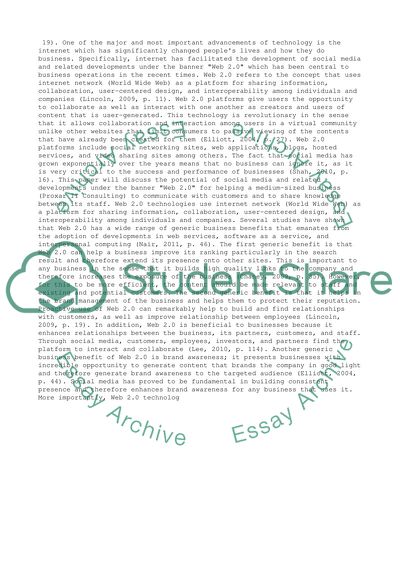Cite this document
(“Web 2.0 and a Small or Medium-sized Business Essay”, n.d.)
Web 2.0 and a Small or Medium-sized Business Essay. Retrieved from https://studentshare.org/business/1456389-the-potential-of-social-media-and-related
Web 2.0 and a Small or Medium-sized Business Essay. Retrieved from https://studentshare.org/business/1456389-the-potential-of-social-media-and-related
(Web 2.0 and a Small or Medium-Sized Business Essay)
Web 2.0 and a Small or Medium-Sized Business Essay. https://studentshare.org/business/1456389-the-potential-of-social-media-and-related.
Web 2.0 and a Small or Medium-Sized Business Essay. https://studentshare.org/business/1456389-the-potential-of-social-media-and-related.
“Web 2.0 and a Small or Medium-Sized Business Essay”, n.d. https://studentshare.org/business/1456389-the-potential-of-social-media-and-related.


